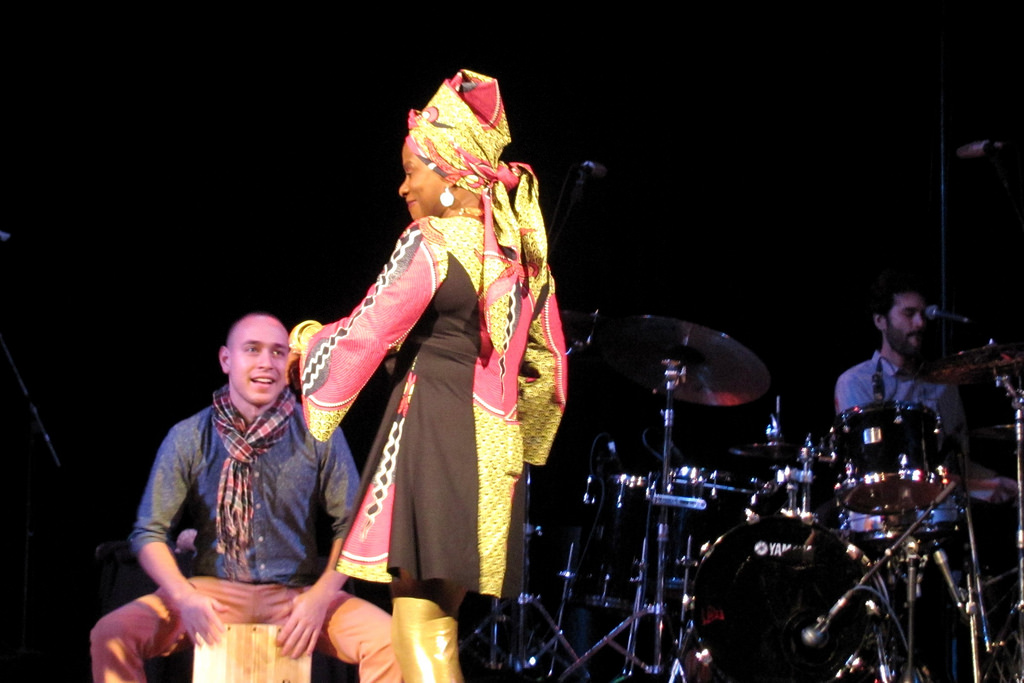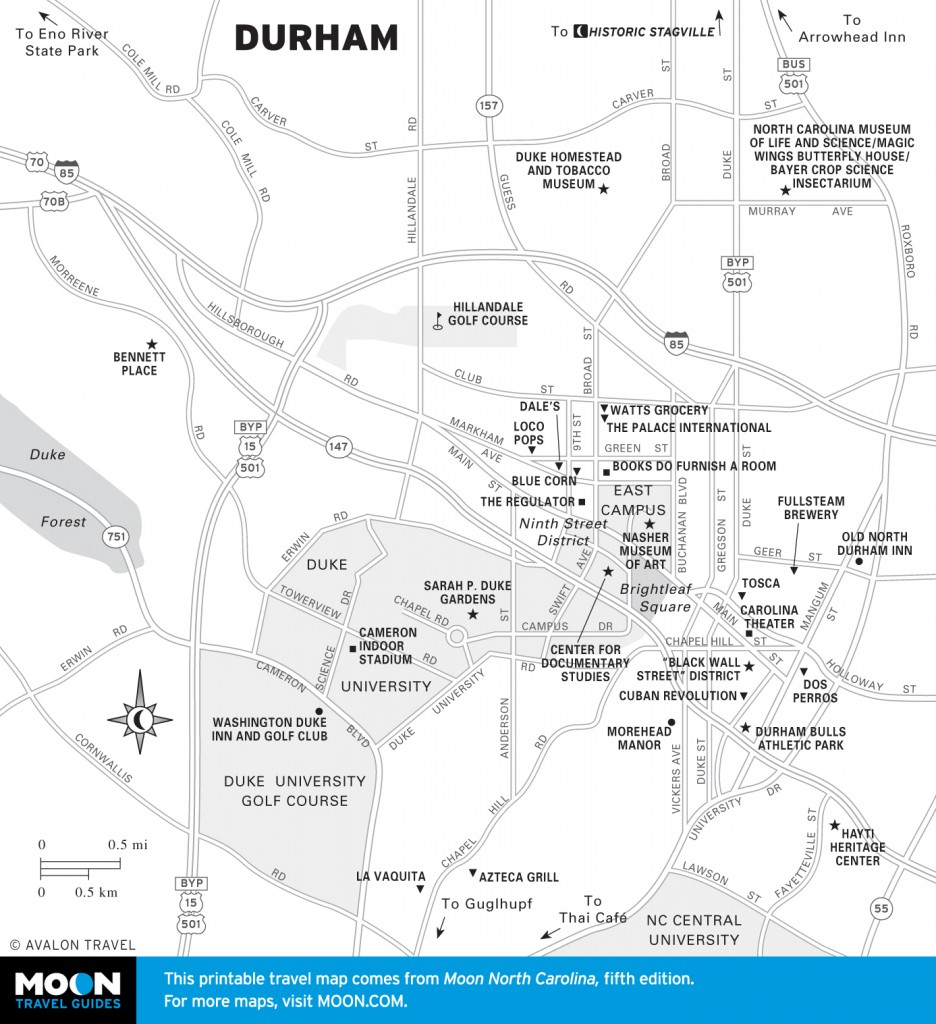
Grammy award-winning Angelique Kidjo performs at the Hayti Heritage Center. Photo © twbuckner, licensed Creative Commons Attribution.
The neoclassical revival-style Mechanics and Farmers Bank Building (116 W. Parrish St., 919/687-7803, 9am-5pm Mon.-Thurs., 9am-6pm Fri.) stands at the heart of a downtown district known in the early 20th century as Black Wall Street. Mechanics and Farmers Bank and “the Mutual” were the flagships of Durham’s African American commercial establishment. The history of the Mutual, the North Carolina Mutual Life Insurance Company (411 W. Chapel Hill St., 919/682-9201), is chronicled in the Heritage Room at its modern-day location on West Chapel Hill Street.

Durham
About 15 minutes’ drive north of downtown Durham, Historic Stagville (5828 Old Oxford Hwy., 919/620-0120, 10am-4pm Tues.-Sat., hourly tours 10am-3pm most days) preserves part of what was a staggeringly large plantation system. In 1860 the Cameron-Bennehan family’s holdings totaled nearly 30,000 acres, and the 900 enslaved African Americans who worked the land were one of the South’s largest slave communities.
Historic Stagville includes 71 acres of the original plantations, with several notable vernacular structures that include a two-story timber-frame slave quarters, a massive hipped-roof barn built in 1860, and the late-18th-century Bennehan plantation house. Interpretation of the Stagville site acknowledges the central role that enslaved African Americans played here and tries to reconstruct, through documentary evidence, archaeology, and folklore, what life may have been like for the slaves. One of the main events on Stagville’s calendar is its Juneteenth Celebration, an event celebrated in parts of the South for generations that marks the emancipation of enslaved African Americans at the end of the Civil War. Stagville’s Juneteenth features music, food, crafts, and interpretation by costumed guides.
Excerpted from the Fifth Edition of Moon North Carolina.